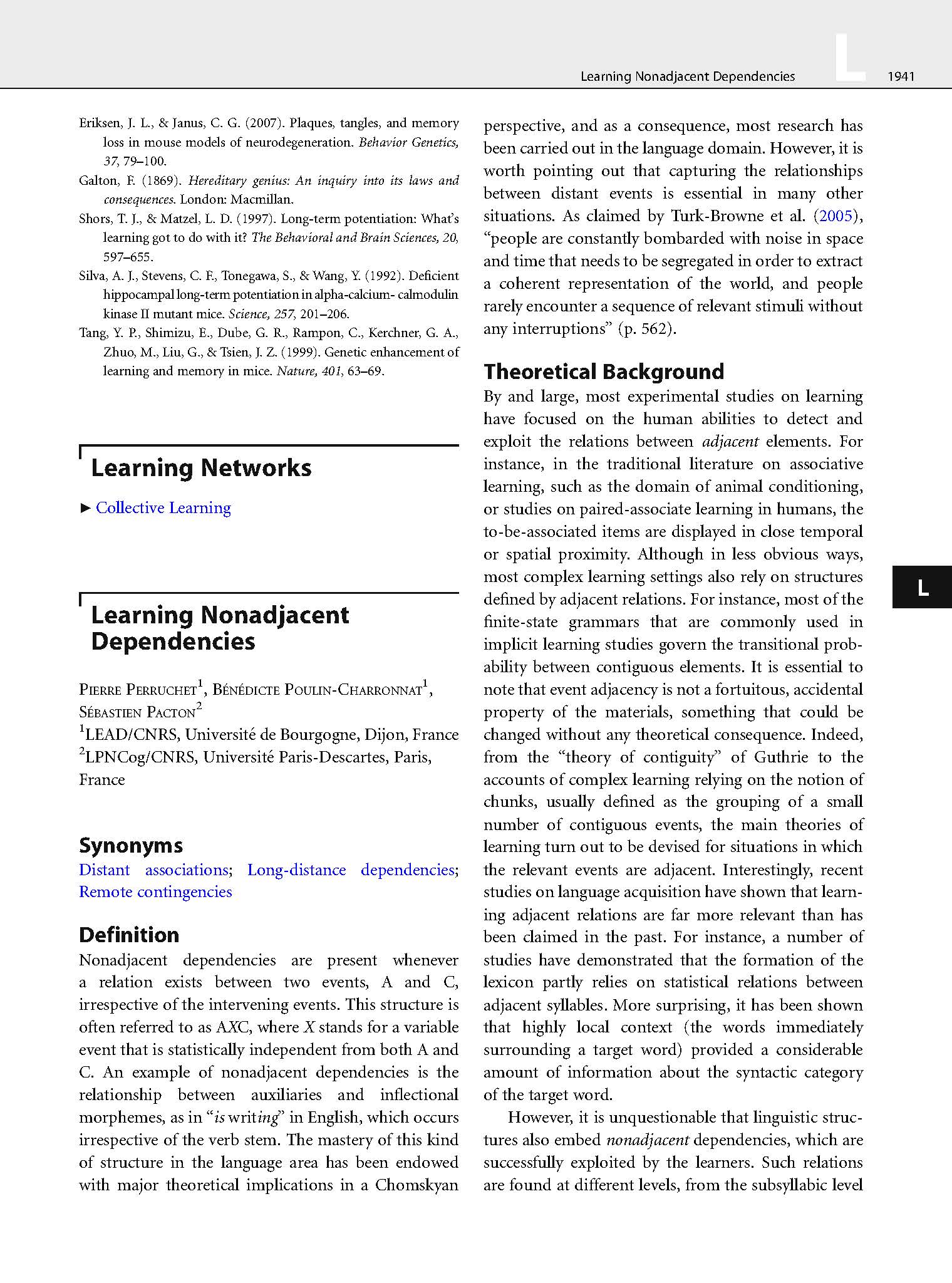Nonadjacent dependencies are present whenever a relation exists between two events, A and C, irrespective of the intervening events. This structure is often referred to as AXC, where X stands for a variable event that is statistically independent from both A and C. An example of nonadjacent dependencies is the relationship between auxiliaries and inflectional morphemes, as in “is writing” in English, which occurs irrespective of the verb stem. The mastery of this kind of structure in the language area has been endowed with major theoretical implications in a Chomskyan perspective, and as a consequence, most research has been carried out in the language domain. However, it is worth pointing out that capturing the relationships between distant events is essential in many other situations. As claimed by Turk-Browne et al. (2005), “people are constantly bombarded with noise in space and time that needs to be segregated in order to extract a coherent representation of the world, and people rarely encounter a sequence of relevant stimuli without any interruptions” (p. 562).
Learning nonadjacent dependencies
